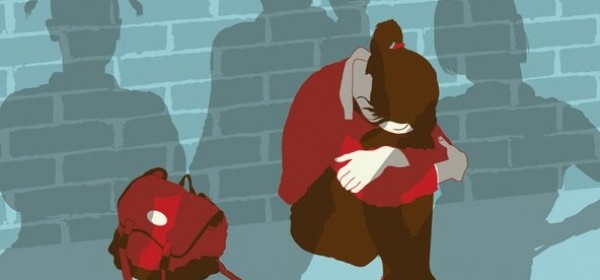New York Times
By Anahad O’Connor
Connie Anderson didn’t know what was bothering her 17-year-old son, a Baltimore-area high school senior with Asperger’s syndrome, a form of autism. He was usually a diligent student, but his grades began to plummet.
“He was starting to go downhill fast,” Ms. Anderson said. “His grades were crashing, and he wasn’t able to focus.”
At a meeting with school counselors, the teenager finally spoke up, confessing that he was being bullied by students in the cafeteria. Once, they had pulled his pants down to his knees in front of his class.
While the problem of school bullying has received national attention, with many states passing anti-bullying legislation and school districts adopting anti-bullying programs, a troubling new pattern has emerged among victims. Research published on Monday in Archives of Pediatric & Adolescent Medicine shows that children with autism spectrum disorders, who typically have difficulty in communicating and forming relationships, are far more likely to be bullied than their non-autistic peers.
“I would call it a profound public health problem,” said Paul R. Sterzing, lead author of the new study and an assistant professor at the school of social welfare at the University of California, Berkeley. “The rate of bullying and victimization among these adolescents is alarmingly high.”
The children at greatest risk, it turns out, appear to be those who also hold the most promise for leading an independent life. The researchers found that the risk of being bullied was greatest for high-functioning children who end up not in special education programs, but in mainstream classes, where their quirks and unusual mannerisms stand out and they are more exposed to bullies.
Many parents of children with autism already are well aware that their children are taunted and tormented at school, but the new study suggests the problem is pervasive. Dr. Sterzing’s data, collected from a nationally representative sample of 920 middle- and high-school students with an autism disorder, shows that 46 percent have been bullied.
By comparison, in the general adolescent population, an estimated 10.6 percent of children have been bullied. Dr. Sterzing’s study also showed that children were at highest risk for bullying if they also had a diagnosis of attention deficit hyperactivity disorder. Notably, children with A.D.H.D. also were more likely to display aggressive behavior themselves; however, the rate of bullying perpetrated by children with autism was 14.8 percent, similar to the rate estimated for the general population.
The findings are based on data collected in 2001 from a larger 10-year study of more than 11,000 special education students. Parents of autistic children and school administrators were asked to report on instances of bullying that occurred in the previous year.
Children and adults with autism spectrum disorders often are socially awkward and have difficulty communicating and recognizing social cues. Another hallmark of the disorder is a strict adherence to rituals and habits.
“Many of the defining characteristics of autism are the ones that put them at greatest risk of bullying,’’ said Dr. Catherine Bradshaw, deputy director of the Center for the Prevention of Youth Violence and an expert on bullying at Johns Hopkins University.
Bullying of children with autism disorders most often occurs as teasing and name-calling, being shunned from activities and hitting.
Dr. Paul A. Law, director of the Interactive Autism Network at the Kennedy Krieger Institute in Baltimore, said middle school can be particularly perilous for high-functioning children with autism who lack social skills, because it represents a time when peers can be especially unforgiving of social missteps.
“Social interactions are extremely complicated at these younger ages,” said Dr. Law. “It doesn’t take long sitting in a middle school cafeteria to see that.”
Dr. Law said his group has found that children with an autism spectrum disorder are victimized at a rate more than three times that of their non-autistic siblings.
One mother of a high-functioning autistic teenager in Los Angeles, who asked that her name not be published to protect her son’s privacy, recalled that he was routinely bullied by a group of middle-school classmates who would pick on him at the playground or ambush him or throw things as he walked home from school.
“They knew that a little thing would throw him off his regimen,” she said. “If you stole his book or stole his homework, to him it would literally be a disaster. He would run around the schoolyard yelling, ‘Who’s got my homework?’ He didn’t have the skills to cope with that.”
To avoid the harassment, he began taking a car home from school, but one day the bullies pounced on him as he waited for his ride. The school intervened, punishing the bullies, and two of their parents called the boy’s mother to apologize.
Because children with autism have limited communication skills, many may struggle to talk about bullying even to their parents. Others with impaired social skills may not always realize when they are being harassed.
“Children with autism spectrum disorder aren’t very good at picking up on things like sarcasm and humor,” said Dr. Bradshaw. “They can be set up and made fun of in front of groups and not understand it.”
Permalink: School Bullies Prey on Children with Autism





